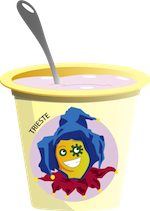Team:Trieste/parts/1
From 2012.igem.org
(Difference between revisions)
Corsogiulia (Talk | contribs) |
|||
| Line 19: | Line 19: | ||
The T5 Cumate Operator gene was obtained by synthesis and then was assembled with other BioBricks. | The T5 Cumate Operator gene was obtained by synthesis and then was assembled with other BioBricks. | ||
<br/> | <br/> | ||
| - | <center><img src="https://static.igem.org/mediawiki/2012/ | + | <center><img src="https://static.igem.org/mediawiki/2012/7/72/T5cumateop.png" width="150px"/><br /></center> |
<br/> | <br/> | ||
<br/> | <br/> | ||
Revision as of 15:33, 26 October 2012
BBa_K875001
More
Description
This promoter is composed by phage T5 promoter and Cumate operator. It is repressed in the presence of CymR protein which binds the Cumate Operator. The expression of a downstream gene is repressed by the presence of CymR protein which binds the Cumate Operator. Adding p-cumate to the culture the CymR is inactivated in his repression and the expression of the gene.
Assembly
The T5 Cumate Operator gene was obtained by synthesis and then was assembled with other BioBricks.
Results
To test this promoter we performed two different assays. First of all we cloned this promoter in pSB1C3 and then we inserted the GFP BBa_I13504 downstream from it. In the same plasmid we cloned J23100-CymR-B0015 in order to repress the promoter. To test this system we used different concentrations of cumate which binds CymR preventing its repression, thus allowing the GFP expression.In liquid assay:
We inoculated a 20ml culture. After overnight growth, we diluted the culture to O.D.600 = 0.2. Then we aliquoted 200 μl in 8 replicates in a microtiter plate at different concentrations of cumate. The reading was performed in a monochromator at 485-510nm.

Both graphs show the relation between p-cumate concentration and the GFP fluorescence intensity at different times. In the first one, the modulation range is explored and it has been relevated that the maximum yield is reached at 30uM. In the second one (the data were normalized over the background given by the LB media) the fluorescence of a culture is followed in the time and it has been noticed an interesting difference between the induced and not induced cultures. A little increase tendency is due to the bacteria population growth.
In plate assay:
We streaked the culture on LB plates containing different cumate concentrations.

Looking forward
To complete our project the T5 cumate operator will be cloned upstream both the sequences of Cathelicidin LL-37 and of T4 Holin. The complex of T5 operator-Holin-T5 operator-LL37 is going to be used to control the bacterial proliferation and most importantly to avoid the horizontal transfer. In the absence of the CymR repressor the toxins will be constitutively expressed leading to cell death. On the other hand in our probiotic the CymR in inserted in double copies in the genome in order to repress the toxin expression. Whenever we would like to eliminate the probiotic we would simply add the cumate that will bind the CymR inactivating it thus inducing toxin expression.Moreover this operator can be used in all the systems that require a very stringent regulation.
Link to the Registry







 "
"









